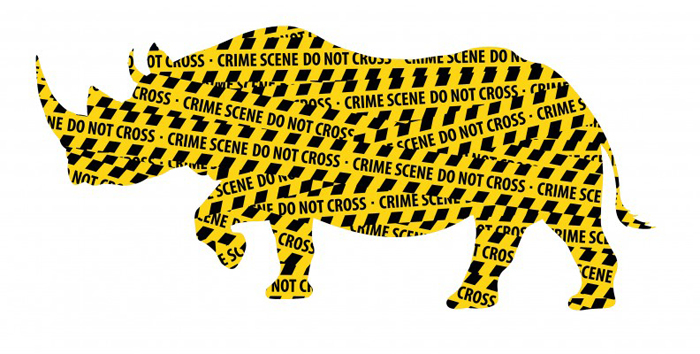Wildlife in crisis
19 May 2015 | Story by Newsroom
Prof Mark Shaw, director of UCT's Centre of Criminology, reflects on the illicit trade in wildlife and animal parts, and considers some of the solutions posed – and hotly debated.
Over the past decade, the illicit trade in wildlife and animal parts has become a multi-billion dollar black market industry. A significant rise in the rate at which animals, across a range of species, are being illegally exploited has generated a global outcry. Last month the Republic of Congo's president set fire to five tons of confiscated elephant ivory in Brazzaville.
In South Africa – home to about 73% of the world's rhino population – more than 4 300 rhino have been killed by poachers in the past six-and-a-half years; sixteen times the number poached in the preceding 27 years. In Kenya, armed rangers guard the world's last surviving northern white rhino, 43-year-old Sudan, around the clock.
Elsewhere, pangolins are fast disappearing, trafficked for their scales and flesh by the ton, as was discovered last month in Indonesia. In the forests of West Africa, whole families of adult chimpanzees are hacked and shot to death by poachers trying to capture their young for the exotic pet trade, and lions have become more valuable for their bones than they are alive.
The human cost on both sides of the conflict is immense. Game rangers, activists, soldiers and police have been killed and dozens of poachers are shot dead every year. Corruption is widespread. Our wildlife are in crisis.
The trade is driven in part by poverty and in part by growing demand, particularly in Asia, for wildlife products. No one solution seems fit for purpose. This is an issue that should concern all South Africans, but is often seen as a "white, middle-class" one. It is critical that this be changed.
Several species in South Africa are under threat, but the rampant poaching of white rhino has become an issue that has generated an intense public debate, with deep-set divisions on how best to proceed with the protection of the rhino from poaching and inevitable extinction.
Those who posit the option of legalising trade in rhino horn in the name of regulating the market are as impassioned and outraged as those who are against the idea. This became apparent at the public hearings held over three days in March this year at the request of the government-appointed Committee of Inquiry on matters relating to the rhino.
The committee has the task of advising government on whether CITES, the international regime for regulating wildlife trade, should be requested to lift the ban on trading in rhino horn – effectively making the practice legal. Those opposed to legalising trade came with sophisticated arguments that, amongst others, claim that the sale of rhino horn would lead to an increase in demand and place even more pressure on the dwindling rhino population.
Those supporting the legalisation of trade produce equally cogent arguments supporting their case. They, for example, posit that unless a commercial value is attached to rhino horn to enable it to be traded legally, rhino owners and game conservationists will not be able to generate the revenue required to win the battle against sophisticated poachers.
"Trading is not the answer, more effective policing is required," the opposition might say. "The resources for this are not there and only the legal sale of rhino horn will help," is the retort.
Private rhino owners warn that many can no longer afford the soaring cost of protecting rhino from poachers. Law enforcement officials complain that they don't have sufficient resources to do more. NGOs have voiced concerns about the militarisation of wildlife protection and anti-poaching operations.
The concerns and criticism are many, and almost every solution proposed is as vehemently contested. What is common cause, is the imminent extinction of rhino as the first of several species in the same predicament, unless substantive steps are taken.
These debates mirror discussions around several other illicit markets now in the news: drugs, the smuggling of people, or the trade in cultural artifacts. In a context where illicit trade easily crosses national borders, and where state authorities lack the resources, skills and information to effectively respond, new ways of thinking and acting are needed.
This is now a key discussion in a globalised world – and success will determine whether or not we will leave sustainable wildlife resources as a legacy for future generations.
| Prof Mark Shaw is director of the Centre of Criminology, which – together with the Global Initiative against Transnational Organised Crime and the Conservation Action Trust – is hosting Wildlife in Crisis, a series of expert lectures and discussions conducted over three evenings at UCT, from 18‑20 May in the Kramer Building, Lecture Theatre 1. Download the programme or contact Wildlife in Crisis for further information. Stay tuned for daily updates from the conference: Day 1: People and wildlife: a status report Day 2: Towards a solution Day 3: Enforcement and justice |
 This work is licensed under a Creative Commons Attribution-NoDerivatives 4.0 International License.
This work is licensed under a Creative Commons Attribution-NoDerivatives 4.0 International License.
Please view the republishing articles page for more information.










